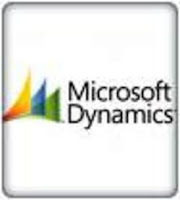The president of a Halifax-based company with 17 employees writes to ask PROFIT-Xtra readers:
"My company is my baby. I'm very passionate about it, maybe even obsessed with it. It bugs me that most of my employees treat their jobs as just a job. Although they do adequate work, I don't see any passion in them. Did I hire the wrong people or should I be doing something specific to get them as excited as I am about our products and services and the future possibilities of the firm?"
My answer:
Some of the obvious ways to give employees a chance to be passionate about their jobs are employee share ownership and profit sharing plans. The Controller at a client of mine told me about how his company put in a profit sharing plan. It took a couple of years for the plan to kick in, but after they had a good year and the staff received the equivalent of 2 month’s wages in a single payment, he said the attitude in the company changed completely. All of a sudden he was getting support for his cost cutting recommendations, particularly when he reminded staff that it would go to their bonus.
Another way was suggested in a talk by Sam Allred at the Upstream Academy. He recommended that employee pay be more entrepreneurial, by being broken down into three tiers:
- A low base salary that you get just for showing up and doing your basic job,
- A bonus for making budget, possibly shared among a group, and, most importantly for developing passion,
- A significant bonus for going beyond budget.
In that model the base salary typically doesn’t change. As employees gain experience, the top tiers grow. At the end of the meeting I asked Sam how that model would apply to administrative workers who typically don’t have direct budget responsibility. He thought about that for a moment and said that they play a support role, so if the person or department they support makes or exceeds their budget, they should get a piece of that as well.
At the end of the day, however, money only goes so far. Ask yourself whether you are communicating the passion you feel about your business to your employees. I once worked in a little fourteen person consulting firm. One of the owners had this dream about being recognized by the company whose software we represented by being invited into the President’s Club. It was a huge, audacious goal for a firm our size, but his enthusiasm was infectious. We were up against much larger companies from all over North America. The owner celebrated every sale. He talked about the goal at every staff meeting. He charted progress. He made sure that he dealt with any obstacles people experienced. It really felt like we were pulling together as a team. That was a fantastic time and yes, after a LOT of hard work, we finally made it.
Update: Profit Magazine chose to publish this entry here.












